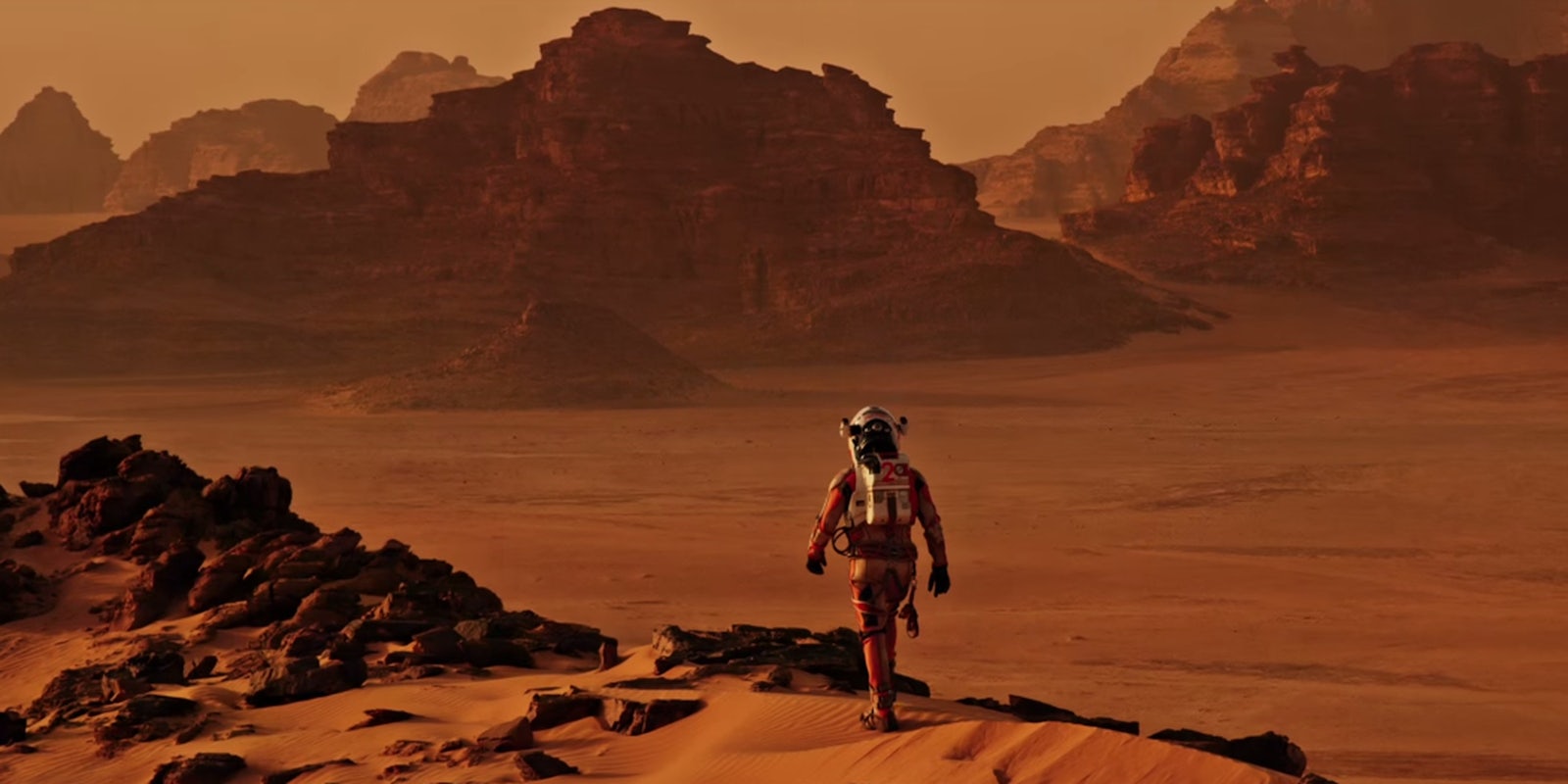By the time you see The Martian in movie theaters next week, one of its biggest plot points will already be a plot hole—thanks to this week’s announcement of water on Mars.
Though most of us only heard about Andy Weir’s bestselling novel of interplanetary survival last year, The Martian actually started its life in 2009 as a serially posted work which Weir eventually self-published in 2011. After the work became a phenomenon on Amazon, the publishing industry came calling—which is how we wound up with a Ridley Scott-directed movie starring Matt Damon.
Though it seems hard to imagine in the current scientific climate, in which scientists are finding water all over the place, way back in 2009 when Weir started writing the book, the evidence for fresh liquid water on Mars’s surface wasn’t very high.
Sure, there was lots of proof that Mars was icy, and that it might contain water in deep underground oceans, and had definitely had water on the surface at some point in the far past. But for Weir, whose father was an astrophysicist and who grew up reading about sci-fi journeys to the stars and beyond, there just wasn’t enough proof.
So even though Weir paid painstaking attention to the science involved in stranding a man one planet down, he missed a spot. A rather huge spot.
(Spoilers ahead!)
The titular Martian is Mark Watney, who accidentally winds up stranded on Mars after a freak accident convinces his crew he’s dead and a storm forces them to separate. Watney’s chances for short-term survival on the planet are good thanks to the state-of-the-art living habitat (the HAB) NASA has already left on the planet, well-stocked with gear and plenty of high-tech gadgets the space center currently uses.
There’s just one problem: The planet is freezing, and if Watney can’t figure out how to create water, he won’t last long. The question of how to generate water using his available resources is a major one that takes up a significant amount of plot time. In the end, in order to produce the water he needs, Watney winds up having to pull off an extremely dangerous science experiment that nearly blows up the lab.
In an interview Monday with the New York Times, Scott revealed that he actually found out two months ago about the discovery from researchers at NASA. That wasn’t nearly enough time to make changes to the movie, but it evidently was a mark of respect from NASA scientists for Scott’s detailed project. The Martian has utilized Neil De Grasse Tyson in its marketing efforts, and early copies of the film were sent to actual astronauts in the U.S. space station as part of NASA’s plan to go to Mars by 2030:
Watched @MartianMovie on @Space_Station last night! Today working towards our #JourneyToMars during my #YearInSpace! pic.twitter.com/rIEBjFxRIr
— Scott Kelly (@StationCDRKelly) September 20, 2015
As for Weir, he hasn’t commented yet on the new plot-busting discovery, though he did recently tweet these humorous takes on Watney’s life before and after being stranded on the planet:
Watney’s history with Disco. pic.twitter.com/uiopwWHHVr
— Andy Weir (@andyweirauthor) September 26, 2015
Watney’s history with fixing stuff pic.twitter.com/ljusY9Zakp
— Andy Weir (@andyweirauthor) September 26, 2015
Watney’s history with science pic.twitter.com/KafDfbZjd0
— Andy Weir (@andyweirauthor) September 26, 2015
Wantey’s history with potatoes pic.twitter.com/3hXklnDJRW
— Andy Weir (@andyweirauthor) September 26, 2015
The Martian lands in theaters Oct. 2. In the meantime, here’s the last of the viral videos Watney’s fictional “Ares” mission has been releasing prior to his fateful trip.
https://www.youtube.com/watch?v=T5WvVytqHFc
Screengrab via Fox/YouTube


